Glimpses of the South Pole sky through U of T astronomer's lens
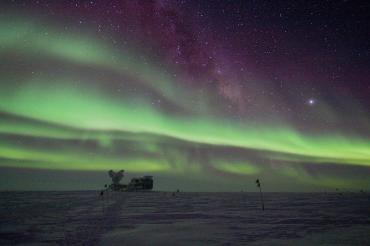
Published: September 28, 2017
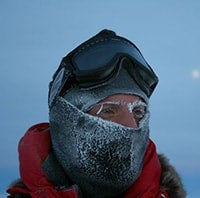 Some researchers take up pool. Others binge on seasons of Seinfeld and other old TV shows from the station’s DVD collection. Vanderlinde, an assistant professor in U of T’s Dunlap Institute for Astronomy & Astrophysics, brought a camera.
Some researchers take up pool. Others binge on seasons of Seinfeld and other old TV shows from the station’s DVD collection. Vanderlinde, an assistant professor in U of T’s Dunlap Institute for Astronomy & Astrophysics, brought a camera. 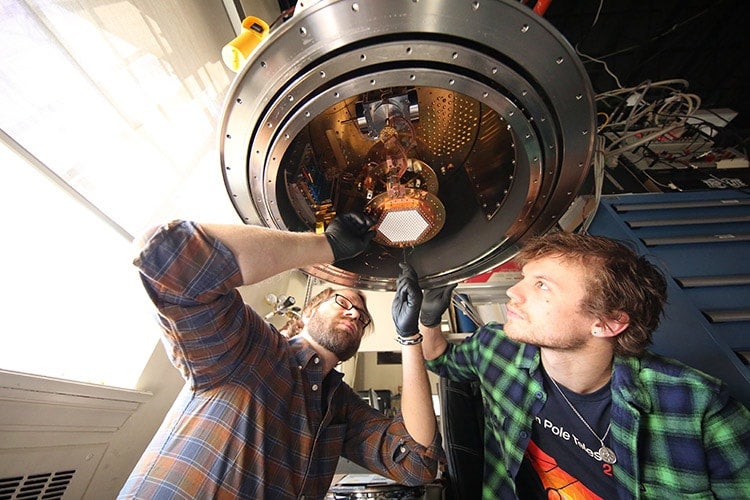
Dunlap fellow Tyler Natoli and PhD student Matthew Young test a South Pole Telescope 3G detector assembly in a cryostat in the Dunlap Institute (photo by Chris Sasaki)
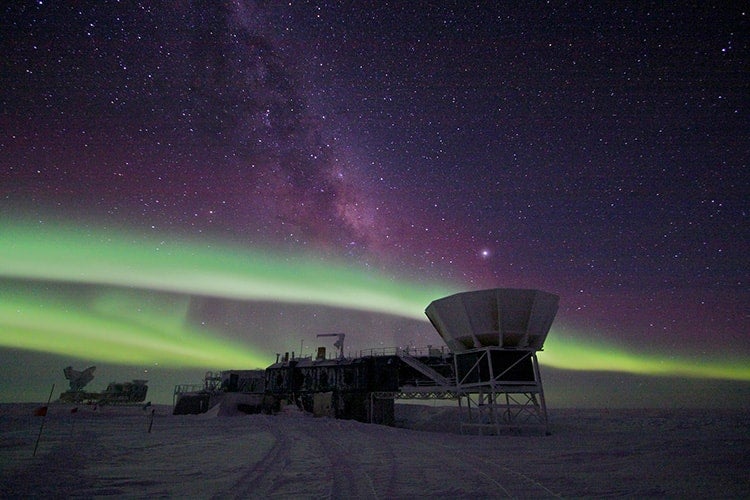
The walk to work can be “slightly harrowing,” he says, since it’s bitterly cold and pitch black most winter days. But sometimes the auroras create a spectacular light show.
“You’re stumbling through the cold and the ice and your head is buried in layers and layers of jacket and hat and scarf, but every now and then you just have to stop and look up.”
The South Pole Telescope is visible in the far left.
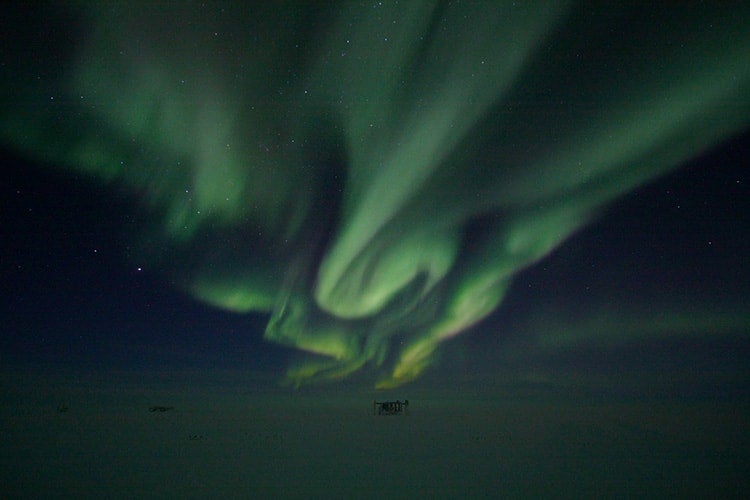
Taking this photo of aurora trails, or of anything else outdoors for that matter, was a challenge.
Using a camera while wearing five pairs of gloves isn’t easy. He attached his outer gloves to a string running through his sleeves so he could take them on and off more easily. Even that delayed frostbite by a few seconds.
Because of the extreme cold, his camera batteries lasted only 30 seconds – usually just enough time to make a single long exposure.
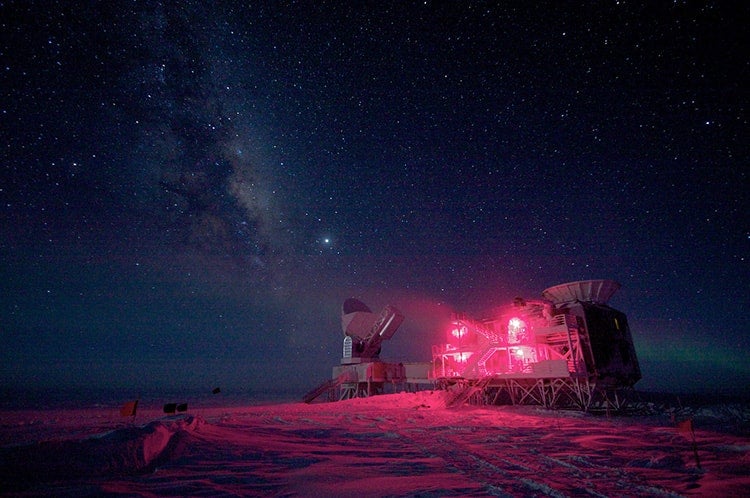
What’s with the red light? Some scientists are studying the auroras, and lights of any colour other than this specific shade of red can skew their data. “I took this picture because the red light just made everything else look so blue,” Vanderlinde says.
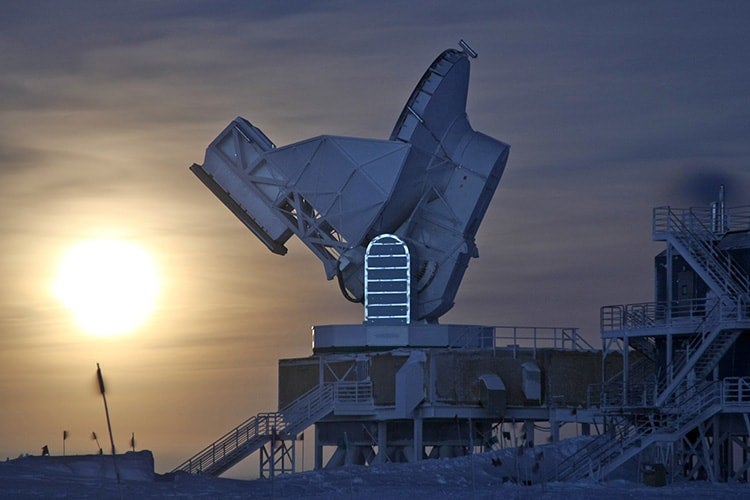
Don’t be fooled: That isn’t a sunrise in the distance. It’s the moon. Over the long winter, the moon shines so brightly it almost looks like the sun.
“I was wrapping my head around it getting dark and suddenly that thing came up,” Vanderlinde says. “You do start thinking of it as the sun – to the point that I started asking people silly questions like, is the sun up today?”
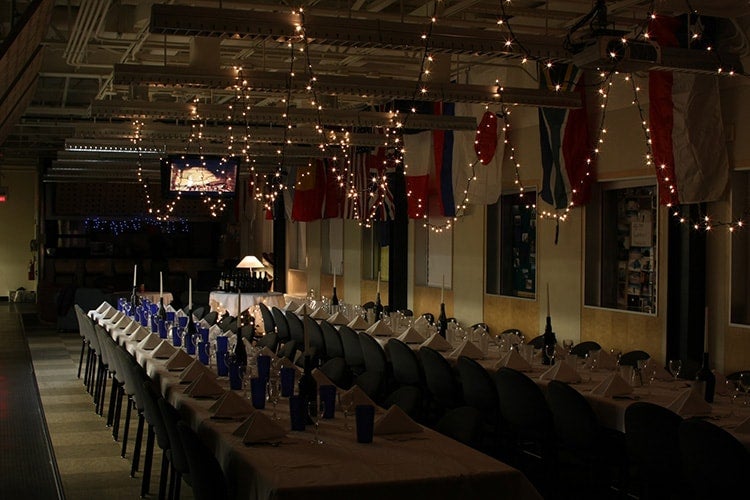
The scientists and galley staff who spend the whole season at the South Pole, a.k.a. “winter-over Polies,” hold a midwinter feast on June 21. “It’s a really lovely chance to just get together. It feels like a Christmas or New Year’s family reunion,” Vanderlinde says. (Yes, that's the fireplace channel on the elevated TV.) Traditionally, they celebrate with a screening of The Shining, about a writer (Jack Nicholson) who loses his mind after taking a caretaking job at an isolated moutain hotel. “At that point everyone can really identify with it,” says Vanderlinde.
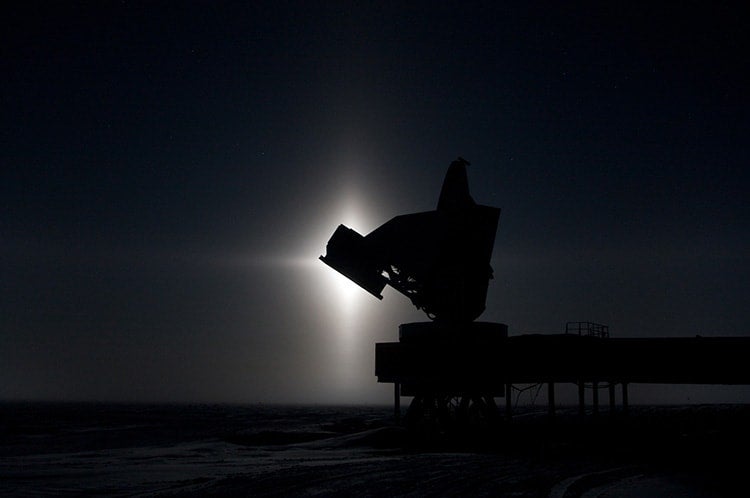
When ice crystals in the air align just right, they form a lunar halo cross, reflecting vertical and horizontal bands of light. Vanderlinde photographed the lunar halo cross peeking around the South Pole Telescope.
“It was just surreal,” he recalls. “One day I walked outside and there was this giant glowing cross in the sky.”
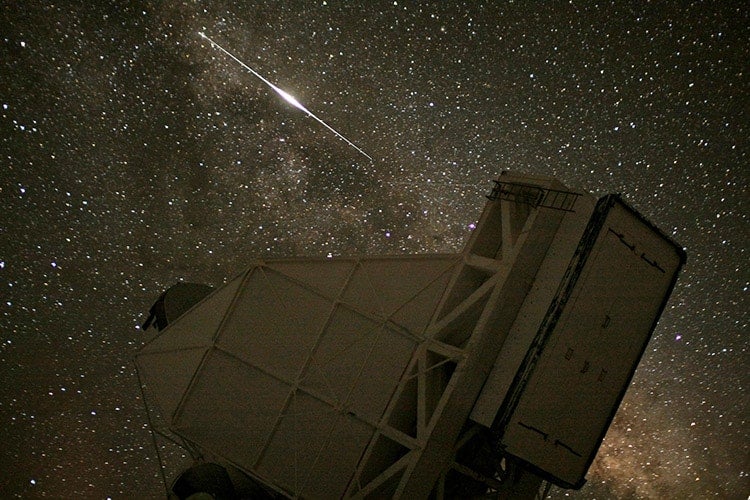
What appears to be a shooting star is actually the sun’s rays reflecting off a satellite that provides global cellular coverage. The orbiting Iridium satellites are known to produce some of the brightest satellite flares.
“When I say they’re incredibly bright, I mean they can get almost to the level of the full moon,” Vanderlinde says.
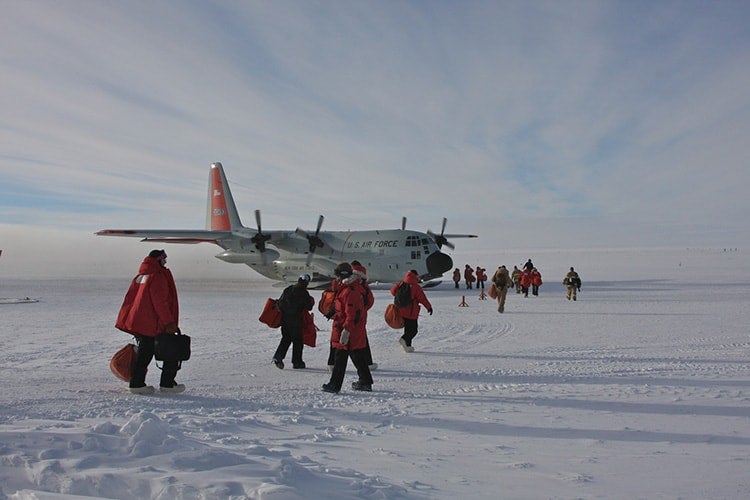
The climate is so treacherous at the South Pole that it's only safe to fly in or out, between November and February, when it’s warmer and there’s greater visibility.
By the end of their stay in Antarctica, those who lived there all winter are so pale, their skin is “transparent,” Vanderlinde says. In comparison, new faces look “orange.”
“They’re tremendously grumpy,” he says. “It’s fairly well known that you don’t talk to a winter-over Polie when you show up new.”



